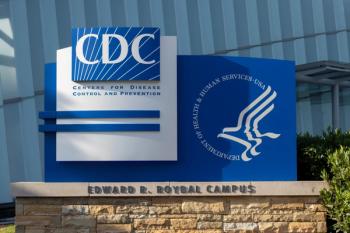
Opioid Use Disorder Treatments Demonstrate Similar Efficacy
National Institutes of Health study supports use of drug therapy for opioid use disorder.
A new study published by The Lancet investigating the efficacy of
Included in the study were 570 adults who were dependent on heroin (82%) and painkillers (16%). Patients were randomized to receive the combination therapy or naltrexone in addition to outpatient treatment, which varied in detoxification approach and length of stay, according to the authors.
The buprenorphine/naloxone combination was administered as a sublingual film, while naltrexone was administered as a monthly intramuscular injection. The authors also tracked adverse events.
“Studies show that people with opioid dependence who follow detoxification with no medication are very likely to return to drug use, yet many treatment programs have been slow to accept medications that have proven to be safe and effective,” said Nora D. Volkow, MD, director of National Institute of Drug Abuse. “These findings should encourage clinicians to use medication protocols, and these important results come at a time when communities are struggling to link a growing number of patients with the most effective individualized treatment.”
The authors hypothesized that naltrexone therapy would be more difficult to start since it requires full detoxification prior to initiation; however, the burden of detoxification and the efficacy of the treatments was previously unknown.
While 94.1% of patients successfully started the combination drug, only 72.1% of patients started naltrexone therapy, which was expected.
Among all patients, the 24-week relapse rate was 65.4% in the naltrexone group and 56.8% among patients in the buprenorphine/naloxone group, according to the study. The authors said that the differences were the result of early relapse among patients who were unable to start naltrexone therapy.
Among the patients who successfully started therapy, the relapse rates were similar, with 52% of naltrexone-treated patients and 55.6% of buprenorphine/naloxone-treated patients experiencing a relapse, according to the study.
Other outcomes—including days abstinent, negative drug tests, and time-to-relapse—appeared to favor the combination therapy when examining all patients. Only including those who started treatment, the authors found that the outcomes favored naltrexone.
Overall, overdose rates were low compared with expectations. The authors concluded that both drugs provide strong protection against relapse and overdose in this population, according to the study.
The authors said that patients who are unable to achieve detoxification for naltrexone initiation should be encouraged to start buprenorphine/naloxone. They also said that methods to transition opioid-dependent patients to naltrexone are needed.
“The good news is we filled the evidentiary void, and also learned that for those who were able to initiate treatment, the outcomes were essentially identical, as were adverse events,” said lead investigator John Rotrosen, MD. “This gives patients the freedom to choose a treatment approach that best suits their lifestyle, goals and wishes.”
Newsletter
Stay informed on drug updates, treatment guidelines, and pharmacy practice trends—subscribe to Pharmacy Times for weekly clinical insights.




















































































































































































































